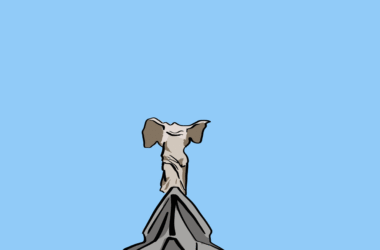 Ryan Reisert
Ryan ReisertOn the coldest day of the season so far, with the first frost sure to come that night, I made my way along Chemin Olmsted up the west side of Mount Royal. I thought I would find myself alone, trekking unnecessarily up a mountain (or just a small hill) in a chilling autumn wind, but I was pleasantly surprised. Montrealers were everywhere, enjoying the nippy air. Runners panted along, elderly couples strolled with rolled-up umbrellas, and shoppers trudged by, carrying their week’s groceries along the darkening forest road to their homes.
The mountain is integral to the machine that keeps city-dwellers going. Mount Royal has become something of a playground where you can escape the city to jog, bike, hike, sightsee, birdwatch, or take pictures of the behemoth LED cross. However, the mountain could easily look and feel drastically different, if the brilliant Frederick Law Olmsted had his way.
With Central Park already on his resumé, Olmsted was contracted to design Park Mount Royal in 1874. His genius showed in the initial plans. The mountain was to be a haven from the then-industrializing city proper. It was planned that the dense vegetation at the mountain’s base would thin out toward the summit, giving a sense of imagined elevation. One winding, gradual road would bring carriages slowly up the slope, acclimatizing the visitor to the surroundings, and allowing the city to fade from one’s mind; tranquility in nature, as seen from a horse-drawn carriage.
As much as this seems suited to Victorian sensibilities, very little of the design was implemented. On May. 24, 1876, Olmsted and city officials inaugurated the park from the mountain’s summit, no doubt while the architect looked around and wondered what had happened to his psychological experiment of an “urban wilderness.” None of the vegetation alteration had occurred, a promenade at the summit was nowhere in sight, and the carriageway was finished hastily. In time, a funicular railway was added, bringing passengers straight from top to bottom, something Olmsted had vehemently opposed.
A depression hit the city of Montreal in the 1870s, and municipal projects had to be patched up cheaply. But perhaps the park and mountain were always destined to be shaped by the citizens, creatively, and as necessary.
As I continued up the mountain, I saw signs of improvised alteration everywhere. Steep biking trails bisect the undergrowth between the road’s switchbacks. Narrow footpaths crisscross through the trees and rickety wooden bridges are haphazardly built where streams impede on the paths. Spying a steep trail that promised a quick hike, I turned off and headed for the summit. So much for Olmsted’s gradual ascent.
I skirted the Kondiacronk chateau with its tourists milling about and taking in the breathtaking view of downtown. Heading down the opposite slope, towards the Maison Smith, the man-made Beaver Lake came into sight. Here too the city’s creative hand made its mark. Between thinned-out trees stands a sculpture garden, a set of dynamited granite stones formed into poised symmetrical stances.
I ended my sojourn on the banks of Beaver Lake. Although scenically beautiful and full of wilderness, the view would have puzzled Olmsted. Joggers paced the path, an uncommon pastime in the 1870s. Rollerblading youngsters strayed from a protective father’s gaze. And, the most confounding to the Victorian eye? As I set off to leave, a roving yoga class of middle-aged women marched by, following an instructor, neon Lululemon body suits starkly contrasting with the autumn leaves.
If you head up the mountain, wander the Chemin Olmsted, an homage to the discarded architect’s plans. Continue on to Beaver Lake. In summer, the paddleboats are cheap to rent from the pavillion. An expansive hill above the lake is a sledding hill in the winter; bundle up, grab a cafeteria tray, and hit the slopes.





